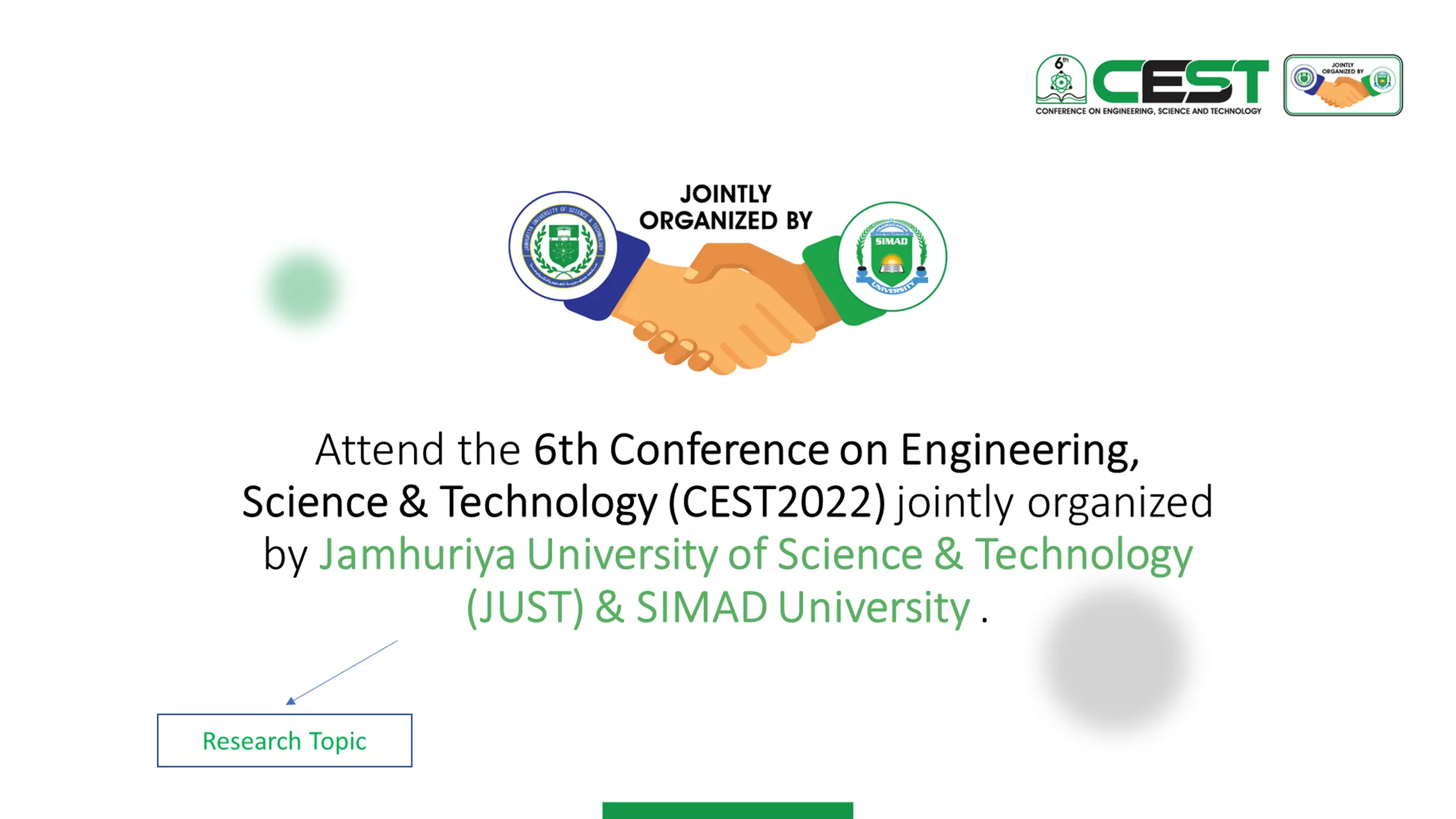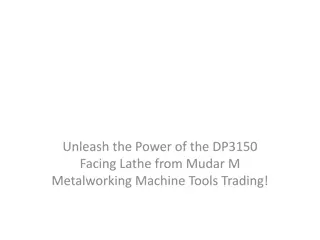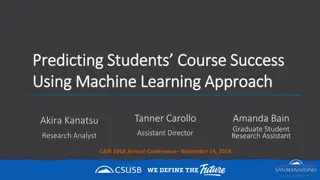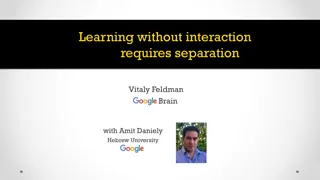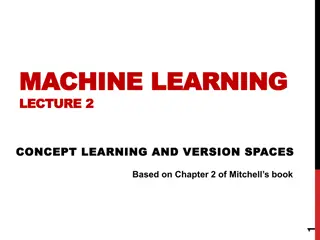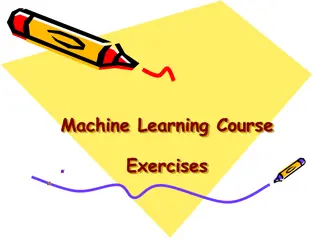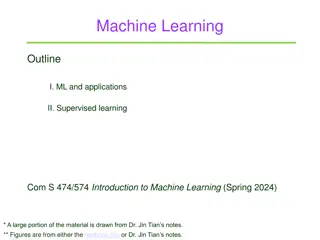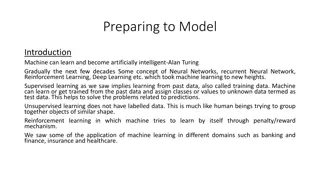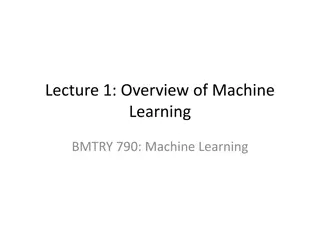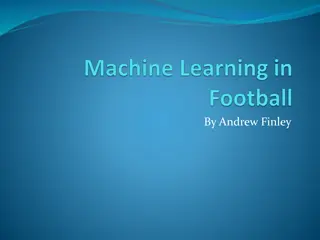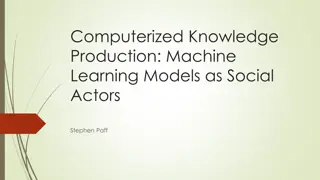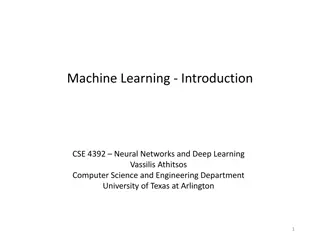Predicting Student Performance using Machine Learning
This study aims to predict upcoming national examination results to assist educational institutions in identifying students at risk of failing. By developing a supervised machine learning model based on students' past performance records, the objective is to enhance educational outcomes and student support systems.
Download Presentation

Please find below an Image/Link to download the presentation.
The content on the website is provided AS IS for your information and personal use only. It may not be sold, licensed, or shared on other websites without obtaining consent from the author.If you encounter any issues during the download, it is possible that the publisher has removed the file from their server.
You are allowed to download the files provided on this website for personal or commercial use, subject to the condition that they are used lawfully. All files are the property of their respective owners.
The content on the website is provided AS IS for your information and personal use only. It may not be sold, licensed, or shared on other websites without obtaining consent from the author.
E N D
Presentation Transcript
Attend the 6th Conference on Engineering, 6th Conference on Engineering, Science & Technology (CEST2022) Science & Technology (CEST2022) jointly organized by Jamhuriya University of Science & Technology Jamhuriya University of Science & Technology (JUST) & SIMAD University (JUST) & SIMAD University . Research Topic
Group Members ABDRIZAK MUSE MOHAMED ABDULLAHI AHMED MOHAMUD BADRUDIIN MOHAMED ALI ZAKARIA ALI HASHI MOHAMED
STUDENT PERFORMANCE PREDICTION USING MACHINE LEARNING Contents Introduction Related work STUDENT PERFORMANC E PREDICTION USING MACHINE LEARNING Problem Statement Methodology Results, Discussion, Conclusions and Recommendations Research objective Research question
Introduction Students performance plays a significant role in a country s social and economic growth by producing creative graduates, innovators, and entrepreneurs. Predicting students academic performance in advance has become more important to both students and lecturers. The purpose of this study is to predict the upcoming national examination results of students to assist ministry of education, schools and education umbrellas in taking steps to protect the students who are likely to fail.
Problem Statement Somali education sector encounter failed graduates for multiple causes at the end of every national exam. This demands the need to have a student performance prediction system using the student s recent years records and processing them into useful data, in order to have the ability to decide student's upcoming results. In respond to the demand for performance prediction system in national examinations. This study suggests a prediction model using supervised machine learning that uses repository of the student s final examination records.
Research objective objectives 1. To predict the upcoming secondary national exams report. 2. To study and identify the gaps in existing prediction methods. 3. To study and identify the factors used in analysing students performance.
Research questions How to predict the number of students who are prone to fail in national examination? What are the variables that are needed to analyse students performance?
Related work (Cortez & Silva,) used 29 predictive variables to predict failure in two core subjects (Mathematics and Portuguese) of two secondary school students from the Alentejo area of Portugal. On a data set of 788 students who took the 2006 test, four data mining methods were used: Decision Tree (DT), Random Forest (RF), and Support Vector Machine (SVM). For a two- class dataset (pass/fail), the predicted accuracy of DT and NN algorithms was found to be 93 percent and 91 percent, respectively. For a four-class dataset, both DT and NN algorithms were shown to have a predicted accuracy of 72 percent.
Methodology The main goal of this experiment is to evaluate the performance of machine learning models Naive Bayes, k-Nearest Neighbors, Decision Tree, Random Forest, Support Vector Machine, Linear-discriminant analysis and Logistic Regression on the sales data extracted from the sales database which is also the experimental data for this thesis. Software Requirements 1. Python 2. Jupyter notebook 3. pandas 4. Plotly-express 5. Sklearn 6. Streamlit
Data analysis Visualizing pass/fail percentage of previous final national exam results
RESULTS AND DISCUSSION The top two performing models that we have selected are the Random Forest Classifier and the Decision Tree Classifier have 98.0% and 99.0 % accuracy, . When we equivalence other metrics like accuracy, precision, recall, and f1 score, Decision Tree Classifier will come out on top since it performs better than Random Forest Classifier
CONCLUSIONS in our thesis, we have developed a System to forecast next year Somali national exam result analytics using the several model. the performance of the system is done by showing different visualizations. As we know there no model which is predicted perfectly when it comes to students forecasting, but as we now Decision Tree model is more suitable for students forecast for the static time series data.
RECOMMENDATIONS To Approach multiple algorithms will improve the accuracy and correctness of prediction students. To achieve more accuracy, we also recommend to use the last national exam results for more reliability.
